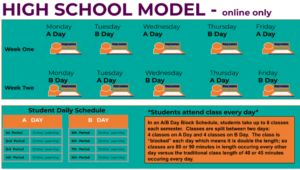6 Ways Digital Learning is Changing Teaching

I visited Wireless Generation, a leading education technology company, in Brooklyn this week. In a discussion about Getting Smart, a couple dozen employees including teachers and technologists asked great questions about the future of learning. Here are two more.
As someone who has, within the last decade, been a student and a teacher, as well as administrative support, I was very interested by the parts in your book when you made it clear that educational institutions are evolving. This means, to me, that those traditional roles of student, teacher, and administrator will reflect significant changes. In making the case for the needs of the new generation, your book focuses more on how students are changing as learners but also in their roles within schools. However, I wonder if you can expound on your perspective about teachers assuming the role of a guide.
There will be a half a dozen significant changes in teaching in this decade. The most significant change will be in the diversification of schools. As Innosight pointed out in The Rise of Blended Learning, there are already a half a dozen school models that vary widely in approach. It’s a very different job to teach workshops at Carpe Diem than it is to conduct online courses at Florida Virtual. Teaching science at Denver School of Science and Technology than it is at an Expeditionary Learning school.
Model differentiation will proliferate over the next decade as school developers invent new ways to blend online and onsite experience around competency-based pathways. This shift from schools that are pretty similar to schools that are very different makes generic preparation even less relevant. It implies that an increasing portion of preparation should be job-specific and that licensure should be performance-based.
The second profound change underway is the shift from the individual practitioner to more collaborative and team based teaching. Better communication tools and social learning networks are helping to break down traditional barriers. It’s almost as easy to collaborate with a colleague across the country as it is to work with one across the hall.
A third and related point is that staffing models will be more differentiated with specific roles and different levels. Lead teachers will take responsibility for more students and will guide the work of junior faculty members and assistants. Compensation systems will reflect different levels of responsibility and contribution. (Look for some important work from Public Impact on this topic next month)
Four, we’re seeing a general shift from didactic instruction to more interactive learning experiences. With growing adoption of adaptive tools, leveled tasks, learning apps, and flipped classrooms, more students are doing more asynchronous and self-directed learning. This means teachers are doing less delivery and more curriculum architecture, advisors as well as instructors.
Fifth, the work is getting more data driven. The bad news is that all the cool web 2.0 components don’t work together very well yet. The good news is that achievement analysis tools are getting better. The shift to big data in the second half of the decade will demand of every teacher much more data analysis.
While it occurs around the edges, a sixth factor will be an increase in distributed roles where teachers provide services from a distance. This will be particularly true in hard to staff area of expertise including special needs and upper division math and science. More teachers will be able to pick their location and hours
And not exactly a change in teaching, but there will be more teaching related jobs—the learning professions—from application development to professional development.
Also, it seems to me that it’s less clear from your book how the evolving panorama might change the role of the administrator.
The historic leadership role of building community around an intellectual mission has never been more important. Like teaching in new blended models, school leaders will face model specific challenges. There will be more model specific preparation.
With the growth in online and blended learning, we’re experiencing a gradual shift from school as a place to learning as a service. As more students begin taking advantage of part time offerings, it is creating a new leadership challenge to maintain coherence. As learning pathways become customized and progress becomes competency-based, making sure that it adds up to an education will be a new leadership challenge.







luis
Computers and tablets are only assistants and a good teacher’s will always be needed.
However social networks such as facebook and YouTube as well as great resources including Wikipedia and Wolfram-Alpha are here to stay so that educators must use them in the teaching process.
Many academics are posting great educational videos and materials online. The only problem is to sort the good ones from the rest and present them in an organized manner.
This effort is being done by: http://Utubersity.com which presents the best educational videos available on YouTube in an organized, easy to find way to watch and learn.
They are classified and tagged in a way that enables people to find these materials more easily and efficiently and not waste time browsing through pages of irrelevant search results.
The website also enhances the experience using other means such as recommending related videos, Wikipedia content and so on. There's also a Spanish version called http://utubersidad.com
This is a project that YouTube should embrace itself, with curated content from academics and maybe using a different URL (Youtubersity?) so it won’t be blocked by schools.
mike alder
Instead of relying on traditional textbooks to impart students knowledge on complex STEM topics, 21st century teachers can now use CK-12 FlexBooks to enhance K-12 learning using interactive videos, audio, images, and more. Visit http://goo.gl/kTDB4